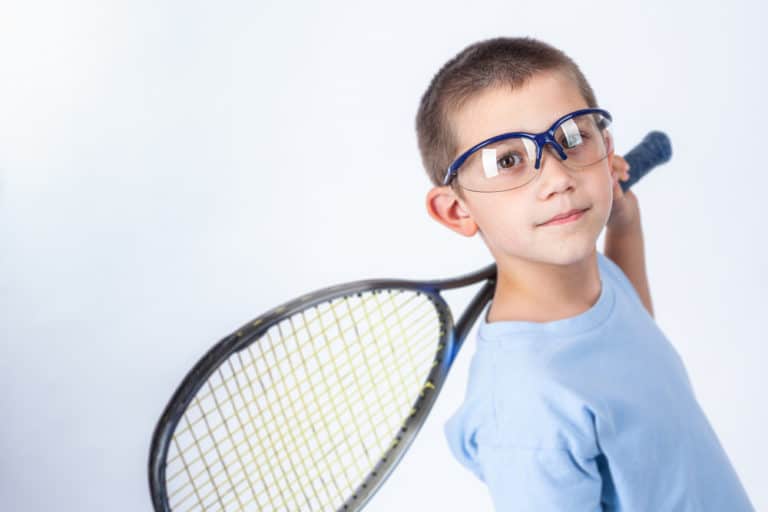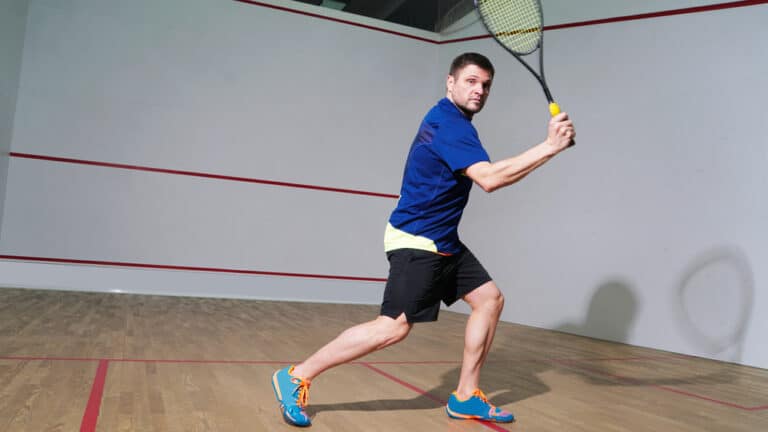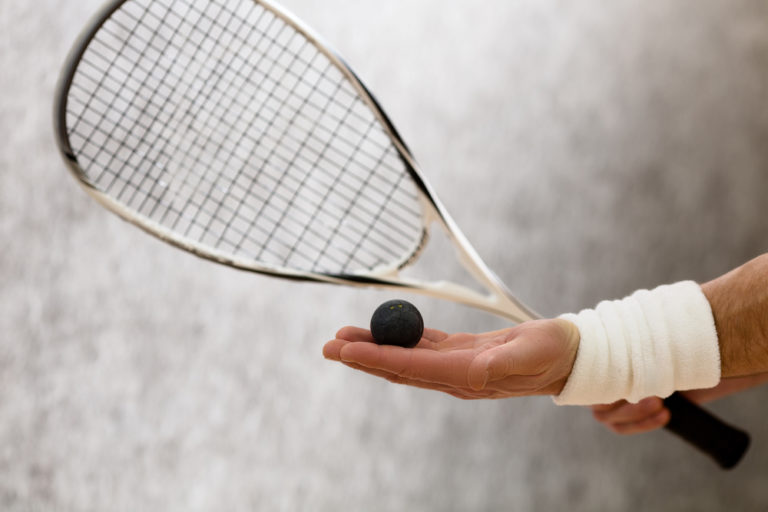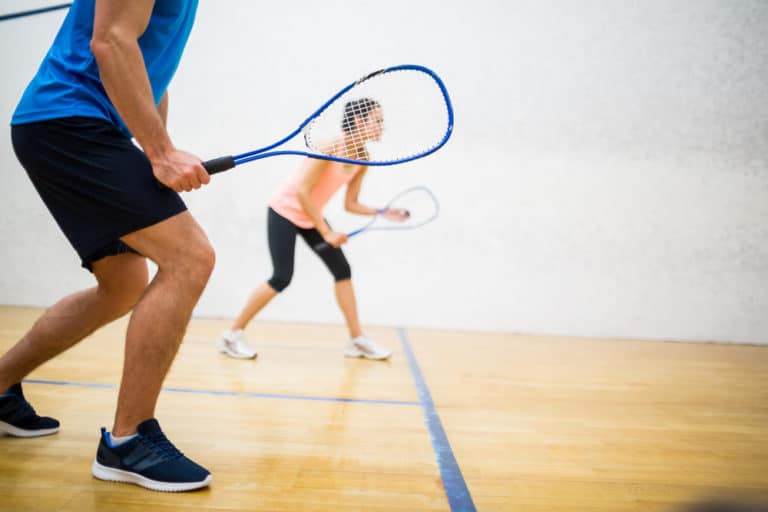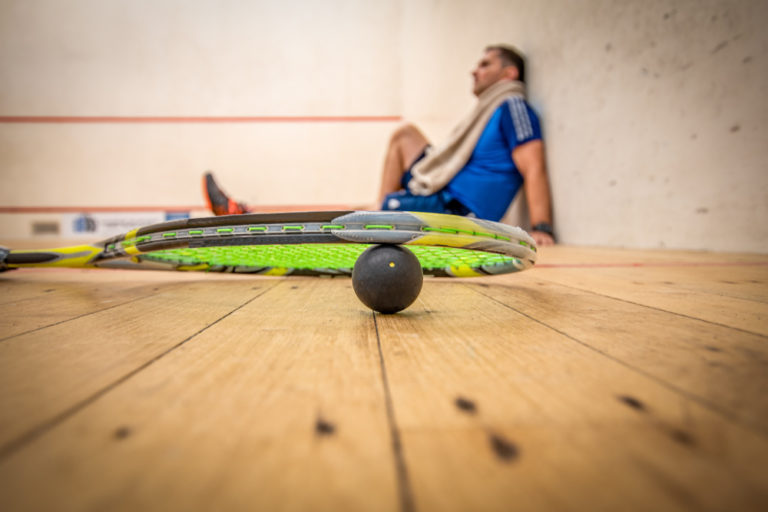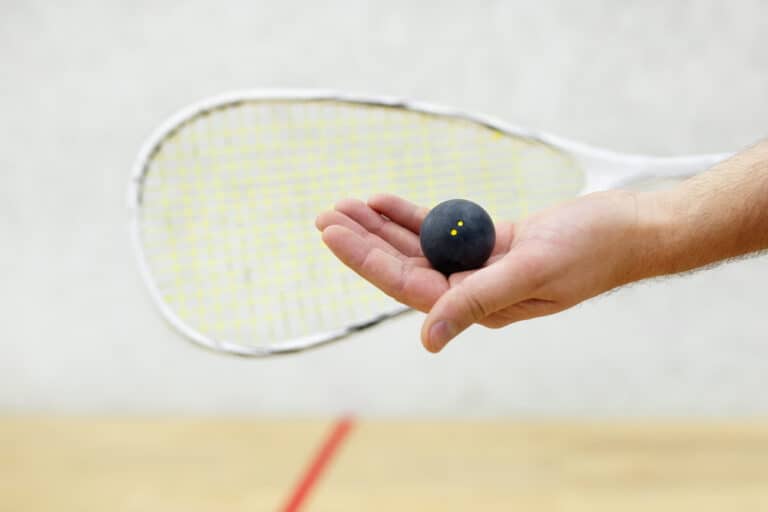Best Squash Goggles
There is a scary statistic in the sport of squash that 25% of all players will experience some form of eye injury at some stage of their playing career. While many of these injuries will be minor, a significant number will be severe, leading to the potential permanent blindness in an eye. With these kinds of risks, I make sure that I wear the best squash goggles that I can afford every time I step onto the court to play.
The best squash goggles are those that fit your face properly in such a way to give you maximum protection from potentially blinding eye injuries as well as having enough ventilation to prevent the lenses from fogging.
Best Budget Goggles – Head Impulse (available on Amazon below)
Best Mid-Range Goggles – Dunlop I-Armor (available on Amazon below)
Best High-End Goggles – Wilson Nvue (available on Amazon below)
The above are my recommendations for the best squash goggles at specific price points. Let’s take a closer look at the criteria I use to choose which pair is the best for me.
Do Professional Squash Players Wear Goggles?
When watching the professionals playing at the PSA World Championship it is easy to assume that most professional players don’t wear goggles while playing. Even during the doubles World Championship, I noticed more players wearing goggles, but not all. However, this does not show the full picture.
Even though we don’t see many professionals at the World Championship level wearing goggles during their matches, you will see them with protective eyewear during training and even recreational games. There are a few possible reasons why many professional players don’t wear goggles during top-level matches.
The first of these is that the PSA World Championship has not mandated the use of goggles at their tournament. Another possible reason why the professionals forego wearing goggles at the World Championship is that they don’t want to risk their goggles fogging up during a point/game. Although there are anti-fogging tips that you can follow (we’ll get to those tips shortly), there is still the chance that the goggles could fog up during play. However, the most likely reason we don’t see more professionals wearing goggles at the World Championship is, to my mind, that they are likely not sponsored by one of the prominent goggles manufacturers.
Should I Wear Goggles For Squash?
There is an important factor that sets squash apart from most other ball sports, making the wearing of eye protection vital. I am referring to the size of a squash ball.
In most hall sports the ball is larger than the eye socket meaning that the brow bone and cheekbone act together as a kind of protective shield, preventing the ball from getting deep into the eye socket and causing major damage.
A squash ball is smaller and so can fit all the way into the eye socket. Even if the squash ball does not directly hit the eye, the angles of the bridge of the nose, cheekbone, and brow bone can all easily deflect a fast-moving squash ball into the eye socket.
That gets me to the main reason I believe that squash players should wear goggles. Squash balls travel at astounding speeds. The fastest recorded speed of a squash ball from a service is 176mph (281km/h). I’ll be the first to admit that none of us will likely hit the ball that hard, but even at half that speed, a squash going directly into the eye socket will cause devastating and likely permanent eye damage.
Do You Need Eye Protection For Squash?
Even though wearing squash goggles is still fairly unpopular, the Australian Institute of Health and Welfare estimates that as many as 25% of all squash players will experience some form of eye injury during their playing career.
That is a staggeringly high percentage, especially when you take into account how devastating an eye injury on a squash court can be when you have a 100mph ball that can fit all the way into an eye socket.
I have always reckoned that eye injuries in squash are very rare, but these statistics paint the risk level in a whole new light. I will certainly be investing in eye protection before I step onto a squash court again. I recon all squash players need eye protection while playing to protect against the ball or flying racket. As the manufacturers of the iMask say: “Money can’t buy another eye.”
How Do I Prevent My Goggles From Fogging Or Hazing During A Match?
One of the main reasons that squash players mention for not wearing goggles while playing is the hazing/fogging up of the lenses, making it difficult to see. This hazing/fogging up is usually combined with sweat dripping down the inside of the lenses.
The simplest solution to the problem can be found in the world of endurance sports, where protective eyewear is commonly worn. A sweatband will prevent sweat from dripping down the inside of the lens while having gaps between the top and bottom of the goggles and your face so that the inside of the lenses can get ventilation while you are moving.
Even with ventilation spaces, goggles are still prone to fogging while standing still between points. There are some anti-fogging tips that you can follow, and we’ll get to those in a moment.
The most squash-specific eye protection that I have seen is the iMask visor. Currently, the iMask is not available from Amazon in the US but is available from Amazon UK and iMask USA. The visor/eye shield sits far enough away from your face to prevent any fogging/hazing of the lens. The iMask is also far enough from your face to make it possible to wear your prescription eyeglasses under the iMask.
3 Anti Fogging Tips
The most common reason why squash players skip using protective eyewear is that the lenses tend to fog up, making it very difficult to see the ball clearly and focus on your game. However, by following these three tips you can drastically reduce the chances of your goggles fogging up.
Choose Goggles With Anti-Fog Coating
Most sports eyewear has an anti-fog coating applied to the lenses at the factory during the manufacturing process. These coatings wear off over time from sweat, dust, cleaning, and storage. The information booklet for my sports eyewear specifically states that I shouldn’t use any chemical glass-cleaning solvents on the lenses as it will strip the anti-fog coating right off.
If you notice that your squash goggles are constantly fogging up where they originally stayed clear, it could be an indication that your anti-fog coating has worn off and that it is time to replace your eyewear.
A cheaper, short-term solution is to purchase an anti-fog spray that you can apply to the lenses of your squash goggles before you use them each time. However, the anti-fog spray will still be sub-optimal as it won’t be as effective as the original anti-fog coating that was applied in the factory.
Choose Goggles That Have Vented Lenses
Most endurance-sport eyewear feature vented lenses these days and this trend is making its way into squash goggles as well.
Having vents in the lenses increases the airflow behind the lenses so that heat and condensation can clear away and stop the lenses from beginning to fog up in the first place.
Choose Squash Goggles That Fit Your Face Correctly
Choose a pair of squash goggles that don’t sit flush against your face. This has the same effect as having vented lenses. The space between your face and the goggles will allow airflow behind the lenses and prevent them from fogging up.
A properly fitting pair of squash goggles that allow airflow and also have vented lenses will work even better.
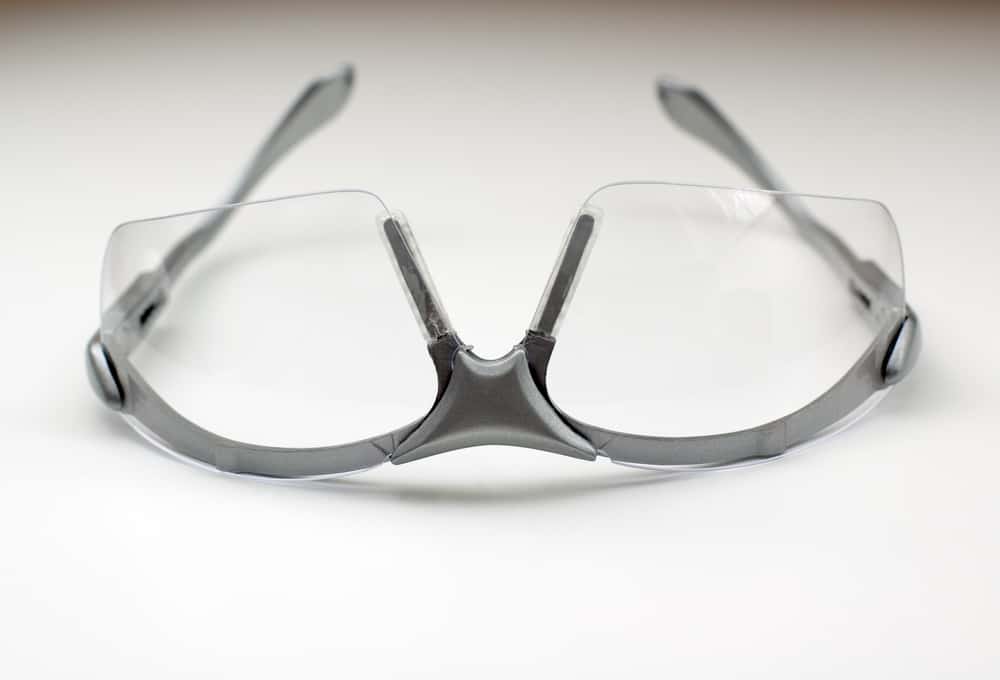
How Common Are Eye Injuries In Squash?
Squash is considered a high-risk sport when it comes to eye injuries with an estimated 25% of all squash players having some sort of eye injury during their squash career. In severe cases, if the squash ball is hit hard enough, it can burst the eyeball which can result in permanent blindness in the injured eye.
The are two factors to contend with. The first is that the squash ball is nearly always hit hard enough to cause permanent eye damage. The fastest recorded squash service in tournament play is 174mph, so at a recreational level, it is fair to assume that amateur players are able to hit the ball at 80mph or harder.
The second factor is that the size of a squash ball is such that if it hits the eye directly, it is able to completely enter the eye socket and cause a complete, permanent rupture of the eye.
Is Squash A High-Impact Sport?
Squash is regarded as a sport that is rated as moderate to high in intensity. To be able to play squash requires squash-specific fitness as it taxes various systems in the body.
As stated in a study published by Pubmed, squash places a high demand on the aerobic energy system no matter what level it is played at. A 90-minute squash game is enough to fully deplete the body of all blood and muscle glycogen stores.
In addition to the demands on the aerobic energy system, the sport involves repeated bursts of intense effort at an anaerobic level that increases lactic acid levels.
Beyond this, squash players need good flexibility to reach the ball, and the repeated changes in direction place above-average stress on joints such as the ankles and knees.
Why Do Squash Players Wear Visors?
Squash players who wear prescription glasses will wear a protective visor that can be worn over their glasses. The visor protects the spectacles from getting damaged by a ball or racket during a game. The impact of a ball or racket on the lenses or frames of a pair of spectacles can shatter them, causing lacerations to the face and eyes.
Wearing a protective visor prevents this from happening.
Can You Use Safety Glasses For Squash?
There is a temptation to wear commercial safety glasses as protective eyewear while playing squash. However, a study published in the British Medical Journal states that this is not a wise decision.
Prescription eyewear tends to splinter on impact. Many non-sport-specific forms of eyewear are not designed to deflect a relatively hard object traveling at 80mph or faster.
Squash players should only use polycarbonate eyewear that has passed the specific testing standards and is approved as safe against the very specific kinds of eye injuries that can happen while playing squash.
Do You Need Squash Goggles If You Wear Glasses?
Neither your normal eyeglasses nor open-eye guards (frames with no lenses) are safe enough to use while playing squash. Both the lenses and the frames of normal eyeglasses have the tendency to splinter when impacted by a squash ball or a squash racket. These splinters can cause severe injuries. The same goes for open-eye guards. Not only can the impact splinter the frame, but a squash ball at speed can force its way through the eye guard into your eye.
If you wear prescription eyeglasses, you have 2 options. You will either need to purchase prescription squash goggles or wear squash goggles over your eyeglasses. The first option can be rather expensive, and with the second, most squash goggles can’t be worn over a pair of glasses. If you do wear prescription glasses, the iMask protection visor is a relatively inexpensive option that can be easily worn over your glasses.
Are Wearing Squash Goggles Mandatory
Even though the use of squash goggles is not mandatory for either singles or doubles, I have noticed doubles players are more inclined to wear them because of the more crowded nature of a doubles game.
In professional-level singles squash, there seems to be an unspoken trust between players that they won’t put an opponent at risk while playing a match. The trouble is that what the professional players do will tend to affect what amateurs do, especially young players that try to emulate their heroes. If more professional players wore squash goggles, it wouldn’t be as difficult to convince young players to do the same.
From this perspective, the PSA could take a leaf from the sport of racquetball that originated in the US. In racquetball, the use of protective eyewear has been made mandatory across all levels of the sport.
In Conclusion: Should You Wear Squash Goggles?
Let’s look at the overall pros and cons of wearing squash goggles while playing at different levels.
Pros:
The pros for wearing protective eyewear while playing squash is easy to see. Squash is an extremely fast and very unpredictable game. There is so much happening at the same time that unless you are a top-level professional it is nearly impossible to predict everything happening on the court. A squash ball can easily travel at 100mph or more, so using goggles makes sense even if playing without goggles is a bit more comfortable.
Cons:
Unless you are wearing an antifog visor, traditional squash goggles can be a nightmare during competitive tournament play.
If a pair of squash goggles are getting worn out, their anti-fog coating no longer works properly. Playing a full match in them becomes a nuisance as you know that they will fog up. Initially, you can get away with cleaning them once or maybe twice a game. However, by the time you get to the 4th/5th game, it gets to a point where you need to wipe your goggles clean after every rally/point.
I have also seen match referees snapping at players for disrupting the flow of the game when they repeatedly pause between points to wipe their goggles clean. This does not exactly help promote the idea that wearing protective eyewear is a good thing while playing squash.





